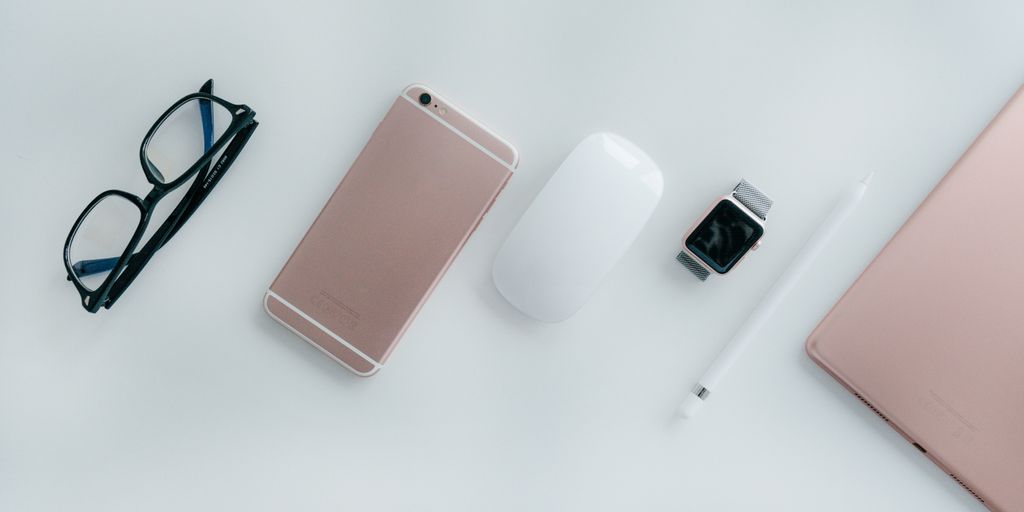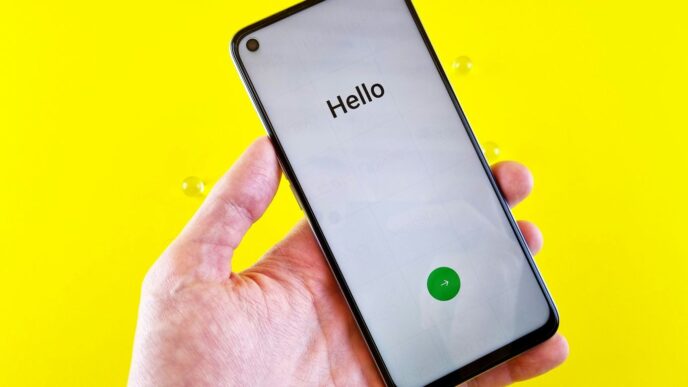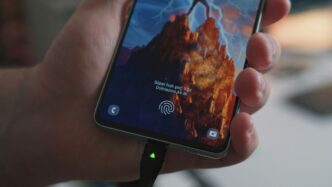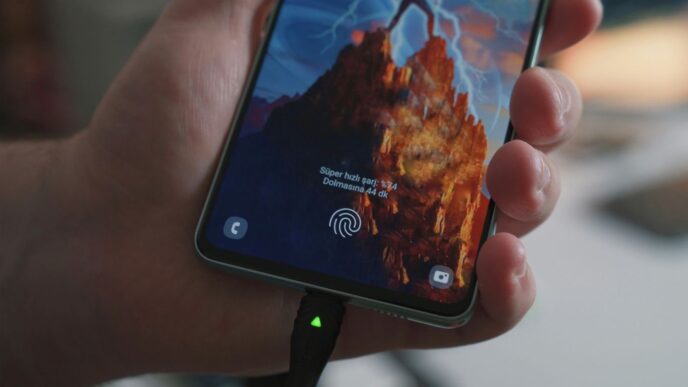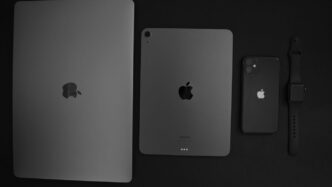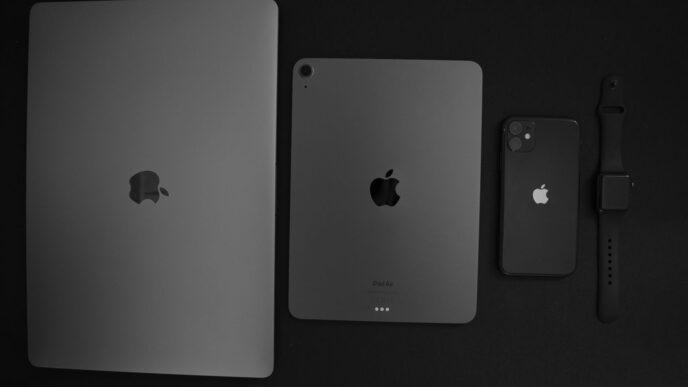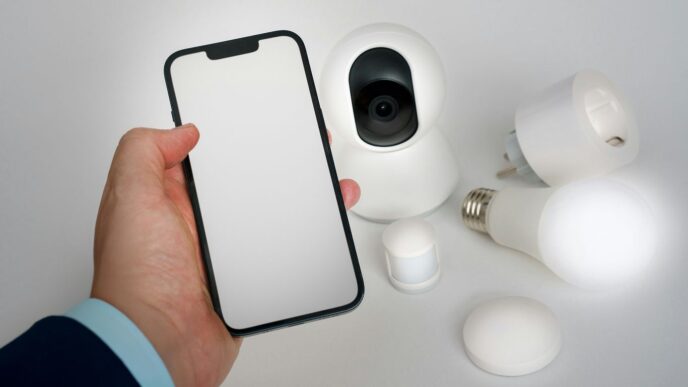Picking out a new phone can be a real headache, right? There are so many choices out there, and trying to figure out which one is actually good for you feels like a full-time job. Luckily, PhoneArena has some pretty neat tools that can make this whole process a lot easier. We’re going to walk through how to use them to really compare phones and find your perfect match. It’s all about making smart choices, and PhoneArena can really help you compare phonearena.
Key Takeaways
- PhoneArena’s comparison tools help you quickly see how different phones stack up against each other.
- Looking closely at things like the processor, camera, and battery life gives you a good idea of a phone’s actual power.
- Checking out phone sizes side-by-side can help you find a phone that feels good in your hand.
- Performance scores and other ratings on PhoneArena give you a clear picture of how phones perform in real life.
- Using filters and checking user reviews helps you narrow down your choices and find a phone that fits what you need.
Understanding PhoneArena’s Comparison Tools
PhoneArena provides some tools to help you figure out which phone is best for you. It can be overwhelming with so many options, but these tools can help narrow things down. Let’s take a look at what’s available.
Navigating the Specs Compare Feature
The Specs Compare tool lets you put phones head-to-head based on their technical specifications. It’s pretty straightforward. You can pick up to three phones and see all their specs laid out in a table. This is super useful for seeing the differences in things like processor speed, RAM, storage, and camera megapixels. It’s a great way to quickly see where one phone might have an edge over another. You can find the perfect phone for your needs using this tool.
Utilizing the Size Compare Tool
Ever wonder how a phone will feel in your hand or fit in your pocket? The Size Compare tool is the answer. It lets you visually compare the size of different phones. You can see them side-by-side or even on top of each other. This is really helpful because sometimes the numbers don’t tell the whole story. A phone might only be a few millimeters bigger, but it can make a big difference in how comfortable it is to hold.
Exploring Popular Comparisons
PhoneArena also highlights some popular phone comparisons. These are usually based on what other people are looking at, so it can be a good starting point if you’re not sure where to begin. It might show you comparisons between the latest iPhones or different Samsung Galaxy models. These Samsung Galaxy phones comparisons can give you ideas about what to look for and what other people are considering.
Leveraging Detailed Specifications for Comparison
Phone specs can seem like a jumble of numbers and jargon, but understanding them is key to picking the right phone. It’s not just about the biggest numbers; it’s about how those specs translate into real-world performance. Let’s break down how to use those detailed specifications to make a smart choice.
Analyzing Core Hardware Components
When you’re looking at phones, the processor is a big deal. It’s the brain of the phone, and it impacts everything from how fast apps open to how smoothly games run. Pay attention to the processor model (like Snapdragon or A-series) and the number of cores. More cores generally mean better multitasking. RAM is also important; it’s like the phone’s short-term memory. More RAM means you can have more apps open at once without the phone slowing down. Storage is where you keep your photos, videos, and apps, so make sure you get enough for your needs. Here’s a quick rundown:
- Processor: Snapdragon 8 Gen X, A18 Bionic, etc.
- RAM: 8GB, 12GB, 16GB
- Storage: 128GB, 256GB, 512GB, 1TB
Evaluating Camera and Display Metrics
The camera and display are two of the most important features for many people. For the camera, megapixels aren’t everything. Look at the sensor size, aperture, and features like optical image stabilization (OIS). A bigger sensor and wider aperture (lower f-number) generally mean better low-light performance. For the display, resolution (like 1080p or 1440p) determines how sharp the image looks. Refresh rate (60Hz, 90Hz, 120Hz) affects how smooth the screen feels. Also, consider the display technology (LCD, OLED, AMOLED) as they each have different strengths and weaknesses. You can use the specs comparison tool to see these side by side.
Comparing Battery Life and Performance Scores
Battery life is crucial. Look at the battery capacity (mAh) and read reviews to see how long the phone lasts in real-world use. Performance scores from benchmarks like Geekbench and AnTuTu can give you a general idea of how the phone performs compared to others. But remember, these are just numbers. Real-world performance can vary depending on how you use the phone. Here’s what to look for:
- Battery Capacity: 4000mAh, 4500mAh, 5000mAh
- Charging Speed: Fast charging (25W+), Wireless charging
- Benchmark Scores: Compare scores across different phones
Comparing Phone Dimensions and Ergonomics

Phone specs are one thing, but how a phone feels in your hand is another. It’s easy to get caught up in the tech, but don’t forget about the real-world experience of actually using the device. PhoneArena has tools to help you visualize and understand these aspects.
Visualizing Side-by-Side Size Differences
Ever wonder how a new phone will compare to your current one in size? The size compare tool lets you see phones next to each other. It’s not just about numbers; it’s about getting a visual sense of the difference. You can even overlay them to see how much bigger or smaller one is compared to the other. This is super helpful if you’re worried about a phone being too big for your pocket or hand.
Assessing Physical Comfort and Portability
Beyond just size, think about the shape and weight. A phone might be compact, but if it’s too heavy, it won’t be comfortable to hold for long periods. Consider these points:
- Weight Distribution: Is the weight evenly distributed, or does it feel top-heavy?
- Material: Is the back made of glass, metal, or plastic? Each material has a different feel and grip.
- Edges: Are the edges rounded or sharp? Rounded edges are generally more comfortable.
Understanding Screen-to-Body Ratios
The screen-to-body ratio tells you how much of the phone’s front is actually screen. A higher ratio means more screen real estate in a smaller overall package. This is important for maximizing viewing area without making the phone too bulky. It’s also worth checking out the Android and iOS operating systems to see how they utilize the screen space. A phone with a high screen-to-body ratio can feel more immersive, but it might also be more prone to accidental touches. Here’s a quick example:
| Phone | Screen-to-Body Ratio |
|---|---|
| Phone A | 85% |
| Phone B | 90% |
| Phone C | 80% |
In this case, Phone B offers the most screen relative to its body size.
Strategic Use of Benchmarks for Informed Decisions

Interpreting Performance Benchmarks
Okay, so you’re looking at phones and seeing all these numbers thrown around – Geekbench, AnTuTu, 3DMark… what does it all MEAN? Basically, these are standardized tests that run the phones through a series of tasks to see how well they perform. A higher score generally means better performance, but it’s not always that simple.
- Consider the types of tasks each benchmark tests. Some focus on CPU, others on GPU, and some try to give an overall score. For example, the AnTuTu Benchmark gives a comprehensive score.
- Look at scores from multiple benchmarks to get a more complete picture. Don’t rely on just one number.
- Remember that benchmarks are just one piece of the puzzle. Real-world usage can vary.
Gauging Camera and Display Quality Scores
Camera and display quality are super important, right? Luckily, there are benchmarks for those too! Sites like PhoneArena often run their own tests to give you objective scores. These tests usually involve analyzing color accuracy, brightness, contrast, and sharpness. For cameras, they look at things like dynamic range, detail, and low-light performance.
- Pay attention to how the scores align with your priorities. Do you care more about color accuracy or brightness?
- Read the detailed analysis that goes along with the scores. The numbers don’t always tell the whole story.
- Compare scores across different phones to see how they stack up.
Assessing Battery Endurance Ratings
Battery life is a big deal. No one wants a phone that dies halfway through the day. PhoneArena tests usually involve running a phone through a typical usage scenario (web browsing, video playback, etc.) to see how long it lasts. They’ll give you a rating in hours, which is a good way to compare phones.
- Keep in mind that your own usage may be different. If you’re a heavy gamer, your battery life will probably be shorter than the rating suggests.
- Look at the battery capacity (mAh) as well. A larger battery usually means longer battery life, but it’s not always the case if the phone has a power-hungry processor or display.
- Consider fast charging capabilities. A phone with a smaller battery but faster charging might be a better option for you if you’re often in a hurry.
Comparing Specific Phone Manufacturers
PhoneArena’s tools really shine when you want to stick with a particular brand. Maybe you’re a loyal Samsung user, or you’ve always been an iPhone person. Whatever the reason, these tools let you really dig into the differences between models from the same manufacturer. It’s not just about specs; it’s about understanding the evolution of a phone line and seeing how each new release stacks up against its predecessors.
Deep Dive into Samsung Galaxy Comparisons
Samsung offers a huge range of phones, from the budget-friendly A series to the flagship S and Z series. Comparing them can be overwhelming, but PhoneArena’s tools make it easier. You can see, side-by-side, how the camera has improved, how the processor has been upgraded, and how the battery life has changed. This is especially useful when deciding whether to upgrade from an older Galaxy to a newer one.
For example, you might want to compare the Samsung Galaxy S25 with the S24 to see if the new features justify the cost. Or, you could compare a Galaxy A series phone with an S series phone to see what you’re missing out on (or not!).
Analyzing Apple iPhone Model Differences
Apple’s iPhone lineup is a bit more streamlined than Samsung’s, but there are still key differences between models. The comparison tools let you see how the camera technology has evolved, how the screen size has changed, and how the processor speed has improved. It’s also helpful for understanding the differences between the standard iPhone, the Pro, and the Pro Max models.
Here’s a quick look at some common iPhone comparisons:
- iPhone 15 vs. iPhone 14: Is the newer camera worth the upgrade?
- iPhone 15 Pro vs. iPhone 15 Pro Max: What are the real differences besides size?
- iPhone SE (2022) vs. iPhone 13 mini: Which small phone is right for you?
Exploring Other Leading Brands
It’s not just about Samsung and Apple. PhoneArena’s tools let you compare phones from other leading brands like Google, OnePlus, and Xiaomi. This is great if you’re considering switching brands or just want to see what else is out there. You can compare things like:
- Camera specs and image quality
- Processor performance and benchmark scores
- Battery life and charging speeds
- Display technology and screen resolution
By comparing phones from different manufacturers, you can get a better sense of what each brand offers and which one best fits your needs.
Optimizing Your Search for the Perfect Phone
Finding the right phone can feel like a never-ending quest. There are so many options, and it’s easy to get lost in the specs and marketing jargon. But don’t worry, with a little strategy, you can cut through the noise and find the device that’s perfect for you.
Filtering by Key Features and Preferences
Start by making a list of what you absolutely need in a phone. Don’t just think about what’s cool or trendy; think about how you actually use your phone every day. Is a great camera essential for capturing memories? Do you need a long-lasting battery to get you through the day? Or is a large, vibrant screen a must for watching videos? Once you know your priorities, you can use PhoneArena’s filtering options to narrow down your search. For example, if you want to find the best phones for making calls, you can filter by call quality and features.
Identifying Your Must-Have Specifications
Beyond general features, consider specific specs that are important to you. This might include:
- Processor: If you’re a gamer or heavy user, you’ll want a phone with a powerful processor.
- RAM: More RAM means smoother multitasking and less lag.
- Storage: Consider how much storage you need for apps, photos, videos, and other files.
- Display Resolution: A higher resolution display will provide a sharper, more detailed image.
- Camera megapixels: While megapixels aren’t everything, they can be an indicator of image quality.
Don’t get bogged down in every single spec. Focus on the ones that will actually impact your daily use.
Reviewing User Feedback and Expert Opinions
Once you’ve narrowed down your options, it’s time to see what other people are saying. Read user reviews to get a sense of real-world performance and potential issues. Also, check out expert reviews from reputable tech sites. These reviews often provide in-depth analysis and comparisons that can help you make a more informed decision. Look for consistent themes in both user and expert feedback to get a well-rounded view of each phone’s strengths and weaknesses. For example, you can use a [specs comparison tool](specs comparison tool) to compare phones side by side.
Beyond Specifications: Real-World Considerations
Okay, so you’ve poured over the specs, compared the benchmarks, and you think you’ve found the perfect phone. But hold on a second! There’s more to picking a phone than just numbers and figures. Let’s talk about the stuff that really matters in day-to-day use.
Understanding Software and Ecosystem Differences
It’s easy to get caught up in hardware, but the software is what you’ll actually be interacting with. Are you an Android person or an iOS devotee? This is a big question! Android offers a ton of customization, while iOS is known for its simplicity and tight integration with other Apple devices. Think about the apps you use every day and whether they work better on one platform versus the other.
- Do you rely heavily on Google services? Android might be a better fit.
- Are you already invested in the Apple ecosystem with a MacBook and iPad? An iPhone could make your life easier.
- Consider the update situation. Apple tends to push out updates to all its devices at once, while Android updates can be fragmented and depend on the manufacturer. Speaking of software, you might want to check out some software options for your new phone.
Considering Future-Proofing and Longevity
Nobody wants to buy a new phone only to have it feel outdated in a year or two. Think about how long you typically keep a phone. If you’re someone who upgrades every year, this might not be as big of a deal. But if you’re planning on holding onto your phone for three or four years, you’ll want to consider future-proofing.
- Does the phone have a powerful enough processor to handle future software updates and demanding apps?
- How much storage does it have? You can never have too much storage, especially with high-resolution photos and videos.
- Does it support the latest connectivity standards like 5G? This will become increasingly important over time.
Evaluating Value and Price-to-Performance
Finally, let’s talk about money. The most expensive phone isn’t always the best phone for you. It’s about finding the right balance between features, performance, and price. Consider what you’re willing to spend and what features are most important to you. A phone with a slightly less powerful processor might be perfectly fine if you’re not a heavy gamer. Or maybe you’re willing to sacrifice a fancy camera to save some money. It’s all about prioritizing your needs and finding the best value for your budget.
Here’s a simple table to illustrate the concept:
| Phone | Price | Key Features | Value Score (out of 10) |
|---|---|---|---|
| Phone A | $800 | Great camera, fast processor | 8 |
| Phone B | $600 | Good camera, decent processor, long battery | 9 |
| Phone C | $400 | Basic camera, okay processor, good battery | 7 |
In this example, Phone B might offer the best value, even though it’s not the most expensive or the most powerful. It all depends on what you’re looking for! Don’t forget to check out some travel tips for your next vacation, you’ll want to take great photos with your new phone!
Conclusion
So, there you have it. PhoneArena’s comparison tools really make it easier to pick out a new phone. You can look at all the little details, see how big phones are next to each other, and even check out how they do in different tests. It takes away a lot of the guesswork. Instead of just guessing or going with what everyone else has, you can actually see what works best for you. It’s a pretty good way to make sure you get a phone you’ll actually like using every day.
Frequently Asked Questions
What are PhoneArena’s main comparison tools?
PhoneArena’s comparison tools let you look at phones side-by-side. The ‘Specs Compare’ tool shows you all the technical details, while the ‘Size Compare’ tool helps you see how big phones are next to each other. They’re great for figuring out which phone fits your needs best.
Can I compare a phone’s internal parts and storage?
Yes, you can compare things like the processor (the phone’s ‘brain’), how much memory it has, and its storage space. These details are important because they tell you how fast and powerful a phone is, and how many apps and photos you can keep on it.
How can I check if a phone will be comfortable to hold?
Absolutely! The ‘Size Compare’ tool is perfect for this. It shows you how phones look next to each other, helping you decide if a phone will feel good in your hand or fit in your pocket. You can even see how much screen you get compared to the phone’s overall size.
What are benchmarks and why are they important when comparing phones?
Benchmarks are like report cards for phones. They show you how well a phone performs in different tests, like how fast it opens apps, how good its camera takes pictures, or how long its battery lasts. Higher scores usually mean better performance.
Can I compare different models from the same phone company?
Yes, PhoneArena lets you focus on specific brands like Samsung Galaxy or Apple iPhone. You can dive deep into the differences between various models from the same company, which is helpful if you’re loyal to a certain brand.
What’s the best way to find the right phone using PhoneArena?
To find your perfect phone, you should use the filters to narrow down your choices based on what’s most important to you, like camera quality or battery life. Also, read what other users and experts say about the phones to get a full picture.


